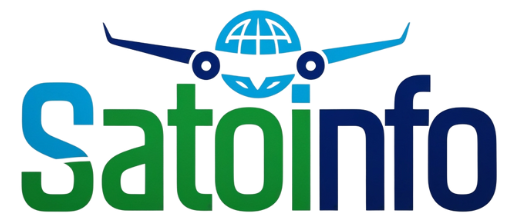Traveling for official duty with the Department of Defense (DoD) involves understanding a range of policies, responsibilities, and systems. Navigating this landscape can sometimes feel overwhelming, particularly for new or inexperienced travelers. Whether you’re using platforms like the Defense Travel System (DTS) or processing reimbursements, it’s critical to know your responsibilities, as well as areas that don’t fall under your purview.
This blog will answer key questions, including “Which of the following is not a traveler responsibility?” and provide a clear understanding of travel regulations, the processes involved in reimbursements, and the functionalities of the DTS. You’ll feel confident about your role and responsibilities in official government travel by the end.
What Are the Sources of DoD Travel Regulations?
DoD travel is governed by detailed regulations that ensure consistency, security, and accountability for authorized travel. Two primary sources serve as the foundation for these regulations:
Joint Travel Regulations (JTR)
The JTR outlines the rules and policies for civilian employees and uniformed service members. It covers a wide range of topics, including travel allowances, per diem rates, and reimbursable expenses. These regulations specifically guide travel authorizations and entitlements.
Defense Travel Regulation (DoD 4500.9-R)
The Defense Travel Regulation, also referred to as DoD 4500.9-R, is a key resource providing additional clarity and procedures regarding transportation and travel requirements within the DoD.
Knowing these sources is crucial when planning official trips, as they help identify what expenses are covered and outline expectations for compliance.
A Traveler Needs to Claim Reimbursement
One of the key responsibilities of a traveler is claiming reimbursements for eligible expenses incurred during official travel. This process can be straightforward if you adhere to the rules outlined within the JTR and DTS.
Steps to File a Reimbursement Claim
- Track Expenses:
Keep detailed records of your expenses during travel. This includes receipts for flights, lodging, meals, ground transportation, and other reimbursable costs.
2. Submit a Travel Voucher:
Use the DTS or manual forms to submit a voucher within five working days of completion of your travel. Be sure to attach all necessary receipts and documentation.
3. Verify Accuracy:
Carefully review the voucher for accuracy. Attachments must meet documentation requirements, and all entries should align with the travel authorization.
4. Monitor Approval:
Once submitted, your voucher will go through a review and approval process. You should monitor its status to ensure it moves forward without delays.
Remember, submitting accurate and complete claims ensures faster reimbursements and avoids potential audit issues.
Which of the Following Is Not a Traveler Responsibility?
When it comes to official travel, understanding what is NOT part of your responsibilities is as important as knowing what is required. The following points clarify areas that do not fall under a traveler’s responsibility:
- Creating Travel Policies:
Travelers are not responsible for creating or amending the travel regulations themselves. These are established and managed by overarching departments, such as the DoD or civilian organizations.
2. Approving Travel Authorizations:
Travelers do not approve their travel authorizations. This responsibility lies with supervisors, approving officials, or authorizing officers.
3. Managing DTS Security Features:
While travelers use the DTS, maintaining the system’s technical security is not a traveler’s responsibility. This is handled by the technical teams overseeing DTS operations.
Understanding these distinctions can prevent confusion and ensure compliance with designated roles.
Which of the Following Statements Is Not True About DTS Security Features?
The DTS is an essential platform for managing official travel, allowing users to easily book trips, create authorizations and file vouchers. However, misconceptions about the system’s security measures do exist.
The following statement is NOT true about DTS security features:
- “The traveler is solely responsible for maintaining the security of DTS data and systems.”
While travelers play a role in safeguarding their accounts (e.g., by maintaining strong passwords), the overall security of DTS is the responsibility of the DoD’s technical administrators. Measures such as data encryption, firewalls, and routine system updates are handled by these teams, ensuring the platform is secure for all users.
Which of the Following Statements Is True About the DTS?
The DTS offers multiple features aimed at transparency and efficiency for DoD travel processes. Among the statements presented, the following is TRUE about the DTS:
- “The DTS allows travelers to electronically manage travel authorizations, reservations, and reimbursement claims.”
Thanks to its user-friendly interface and integration with travel management systems, the DTS streamlines administrative tasks and enables travelers to handle much of their travel documentation digitally. This reduces the need for manual forms and accelerates processing times.
Which Is Not a Method for Updating Your DTS Personal Profile?
Maintaining an up-to-date personal profile in the DTS ensures smooth travel arrangements and accurate reimbursements. However, not all methods are suitable for making updates.
The following is NOT a valid method for updating your DTS personal profile:
- “Submitting updates to a peer or colleague for processing.”
It is your responsibility to update your DTS profile directly through the system or to notify the travel administrator for assistance. Examples of valid updates include:
- Contact details (e.g., phone number or email address)
- Global Entry or TSA PreCheck information
- Banking details for direct deposit of reimbursements
Leaving this task to someone else risks errors or delays in travel processing.
Key Takeaways for Every DoD Traveler
Navigating the rules and processes of official DoD travel may seem daunting at first, but armed with the right resources and understanding of responsibilities, it becomes manageable. Remember to:
- Use resources such as the JTR and DoD Defense Travel Regulation to guide your travel planning.
- Claim reimbursements accurately and promptly by adhering to submission guidelines.
- Recognize areas outside your responsibilities, especially concerning policy creation and technical system security.
For a seamless travel experience, regularly review DTS functionalities and stay informed about system updates.

